Directed and Produced by Mike Dorsey.
Based on the book, Murder Rap: The Untold Story of the Biggie Smalls & Tupac Shakur Murder Investigations, by Greg Kading.
Interest in the murders of Tupac Shakur (fatally wounded in Las Vegas nineteen years ago today) and Christopher Wallace (a/k/a The Notorious B.I.G. or Biggie Smalls) has waxed and waned over the years but has never been fully extinguished. Documentaries about their deaths like Biggie & Tupac and Tupac: Assassination has kept the fires burning but has also added to the confusion surrounding those tragically unprosecuted crimes. There have been books, too. Randall Sullivan’s LAbyrinth (written with the input of the recently deceased former LAPD detective Russell Poole) captured the public’s imagination in 2002 and the theories it put forth became the backbone of a wrongful death lawsuit filed by Biggie’s estate against the City of Los Angeles and its police department that same year (the suit was dismissed in April 2010). In 2011, Greg Kading, another LAPD detective who headed the Biggie Smalls murder investigation, wrote Murder Rap, a book revealing his findings that generated some controversy upon its release.
Two years after Murder Rap was published, Kading (who is surprisingly accessible to the Tupac online fan community) revealed a plan to turn his book into a documentary, which is now on the verge of release in the United States and elsewhere after two years of development and production. (The film’s trailer can be viewed on YouTube and the most up to date information concerning its release can be found on its Facebook page.) I am pleased to report the documentary was worth the wait. Murder Rap is a well-produced and provocative film that makes a disturbing case that both 2pac and The Notorious B.I.G. were killed because of the bitter rivalry between Death Row and Bad Boy Records.
Murder Rap opens in startling fashion with grainy footage filmed just minutes after Biggie’s murder outside the Petersen Automotive Museum on March 9, 1997. Just when you realize exactly what you are being shown, recordings of the frantic 911 calls placed by Biggie’s entourage during the futile trip to Cedars-Sinai Medical Center become audible on the soundtrack (“Big, ya hear me, baby?”). Murder Rap is honest with its audience from the start: this is not going to be an easy film to watch.
Following that brutal introduction and a brief credits sequence, Murder Rap begins a serviceable recitation of the Death Row v. Bad Boy beef: the shooting of 2pac at Quad Studios; Death Row C.E.O. Suge Knight’s infamous appearance at the 1995 Source Awards; the murder of Suge’s friend, Jake Robles, in Atlanta; the beating of Bad Boy employee Mark Anthony Bell at a Death Row Christmas party; as well as the murders of Tupac and Biggie and their immediate aftermaths. (Unfortunately, the confrontation between Death Row and Bad Boy at the 1996 Soul Train Awards, where Tupac came face to face with his alleged murderer, Orlando Anderson, is not discussed.) The information conveyed in this rather dry portion of Murder Rap is probably familiar to many Hip Hop listeners. It is a necessary refresher, however, especially when one considers how many years have passed since the events detailed and the broad audience this documentary seeks to reach.
Murder Rap then relates and refutes the most prevalent theory of the murders to date in detailed, point-by-point, fashion. That theory, once championed but apparently discarded by Russell Poole, was set forth in LAbyrinth and posits that Suge Knight had Tupac murdered in Las Vegas after learning that Tupac intended to leave Death Row, and then hired rogue LAPD officer David Mack and his friend Harry Billups (a/k/a Amir Muhammad) to kill The Notorious B.I.G. six months later. Murder Rap convincingly puts the LAbyrinth theory to rest with a potent mixture of common sense, witness recantations, and police interviews with members of the Bad Boy and Death Row entourages.
After dispensing with the rogue cop theory, Murder Rap turns to its most crucial section, during which Greg Kading details his own investigation, most of which will be familiar to those who have read his book. It begins with a brief description of Kading himself (a now-retired LAPD homicide detective specializing in street gangs) and how he became involved in the Biggie Smalls case (he was assigned in order to disprove the involvement of rogue LAPD officers after Biggie’s estate filed a civil suit against the City of Los Angeles, exposing its police department to up to $400 million in damages). Kading’s thought process and tactics are revealed in a sober, matter of fact, manner. This is a serious film, thankfully free of hyperbole or unnecessary melodrama (kudos to producer / director Mike Dorsey for his tactful handling of the material). Murder Rap’s allegations are shocking enough without histrionic gimmickry.
Kading’s breakthrough came in December 2008 during a proffer interview (i.e., where nothing admitted can be used against a witness unless all or a portion of his/her statements later prove to be false) with Duane “Keffe D” Davis, a Compton shot caller and member of the South Side Crips (hated rivals of the MOB Piru Bloods, a set associated with Suge Knight and Death Row Records). As alleged by Keffe D, the South Side Crips had a relationship with Bad Boy’s C.E.O. Sean “Puff Daddy” Combs as far back as 1994 (when Keffe D loaned his Chevrolet Impala for Usher’s “Can U Get With It” video) and had provided informal security for Bad Boy in California once the beef with Death Row heated up. (Combs was allegedly introduced to Keffe D and the Crips by Eric “Zip” Martin, a New York drug dealer and close associate of Combs who died in 2012 and was the godfather of Biggie’s son with R&B singer Faith Evans.)
Murder Rap takes its time demonstrating the ties between the Crips and Bad Boy (ties consistently denied by Combs) using interviews with Bad Boy security, Crips, Death Row security, Bloods, and even Lil’ Cease, a rap artist and cousin of Biggie (who was in the Chevy Suburban with Biggie when he was gunned down). Keffe D then drops Murder Rap’s biggest bombshell – Sean “Puff Daddy” Combs solicited the South Side Crips to murder Tupac and Suge Knight during two conversations he had with Keffe D, one following a concert in Anaheim, California and the other at Greenblatt’s Deli in Hollywood. Keffe D admits agreeing to wipe out Combs’ rivals for $1 million, an inflated price Combs suggested, evidencing his ignorance of the cheapness of human life to the average Compton gang member.
Keffe D then describes how the hit on Tupac was carried out in Vegas following the Mike Tyson – Bruce Seldon fight on September 7, 1996. According to Keffe D, the Crips were unarmed and had no intentions of fulfilling the murder contract that night. Once Tupac, Suge, et al. assaulted Keffe D’s nephew, Orlando Anderson, in the MGM Grand’s lobby, however, the Crips regrouped with Combs’ friend “Zip” to plan the hit. (The MGM assault was allegedly retaliation for Orlando’s theft of MOB Piru Travon Lane’s Death Row chain/pendant earlier that summer.) Zip, who was in Las Vegas to attend the Tyson fight, allegedly provided the Crips with the murder weapon, a .40 caliber Glock handgun that he had hidden in a secret compartment in his Mercedes-Benz (Foxy Brown, a then up and coming Brooklyn rap artist, was with Zip that night and was allegedly in the Benz when the Glock was handed over to the Crips).
The Crips took two vehicles to Suge’s night club, Club 662, one of which was a rented white Cadillac. After waiting twenty minutes in 662’s parking lot for Suge and Tupac to arrive, the Crips became anxious and left. On their way back to the Vegas Strip, they heard young women shouting “Tupac! Tupac!” which directed their attention to a long line of luxury cars going in the opposite direction. The Crips in the Cadillac made a U-turn onto eastbound Flaming Road, scanned the vehicles in Death Row’s caravan, and stopped on the right side of Suge’s black BMW 750. Orlando, who was assaulted by Tupac and Suge just hours earlier, fired Zip’s Glock nine times at the Bimmer, wounding Tupac four times and Suge once. According to Keffe D, Suge recognized him in the Cadillac’s front passenger seat when the shooting began.
Kading did not end his investigation into the Crips’ and Combs’ involvement in Tupac’s murder with Keffe D’s interview. He also questioned numerous other witnesses to corroborate their complicity. Included in this documentary are excerpts of those interviews which paint an unsettling picture and contain allegations which, if true, taint not only “Puff Daddy,” but Faith Evans (who allegedly celebrated when informed by “Zip” that the Crips were responsible for Tupac’s murder) and The Notorious B.I.G. (who was apparently unaware of the $1 million bounty on Tupac and Suge but felt the need to record and foolishly “freestyle” the Tupac diss song “Long Kiss Goodnight” during a radio interview in Los Angeles with Sway shortly before he was killed).
The last twenty minutes of Murder Rap are focused upon Kading’s investigation of Biggie’s murder, a case poetically broken because of a custom 1961 Chevrolet Impala commissioned by Suge Knight as a gift for Tupac, who died before it was completed. The gist of Kading’s findings is that an infuriated and recently imprisoned Knight used an attorney-client privilege ruse to commission the murder of Biggie in retaliation for Tupac’s death. According to Murder Rap, Suge used one of his “baby mamas” as an intermediary to hire one of his trusted soldiers, MOB Piru Wardell “Poochie” Fouse, to ice the “King of New York” for the paltry sum of $13,000.00. As with the prior section of the film, Kading details his investigation, though the weight of the evidence against Tupac’s murderers feels more substantial in my admittedly layman’s opinion. This might explain why the majority of the film is focused on the Vegas murder of Tupac. Murder Rap ends just under two hours after it began with Kading briefly explaining why no formal charges have ever been brought against the alleged conspirators.
Though not perfect, Murder Rap is an important documentary that demands to be viewed by anyone with even a passing interest in the Hip Hop music of the 1990s. It contains, in my very humble opinion, the most plausible explanation yet presented for why two great artists were taken from their families, friends, and from us, their devoted listeners. Those who fervently believe in other theories, who think Tupac and/or Biggie were murdered by the CIA, the LAPD, Suge Knight, or Death Row security chief Reggie Wright, Jr., are unlikely to be persuaded by this film, but that says more about how difficult it is to change decade old opinions than Murder Rap’s quality.
Having seen Murder Rap a number of times in preparation for this review, I get the impression that its makers believe that all of the parties involved shoulder some of the blame for what happened. I would agree with that opinion. That said, I think viewers who have been spoon-fed the New York-based media’s biased depiction of the coastal feud will be surprised by the individual who comes off as the most despicable in the film – for once, it’s not Suge Knight. That individual is Sean “Puff Daddy” Combs, the person who the film points to as having benefited most from the events depicted in Murder Rap. All that is left of Tupac and Biggie are old records, memories, and ashes; Suge sits in a Los Angeles County Jail awaiting trial for the murder of Terry Carter; and yet “Diddy” is worth over $700 million and has even collaborated with Tupac’s friends. Given Diddy’s terse response to the publication of the Murder Rap book in 2011 (“This story is pure fiction and completely ridiculous”), it is highly unlikely he will ever respond to these allegations in any meaningful way. After all, as Biggie once said, “Don’t you know Bad Boys move in silence and violence?”
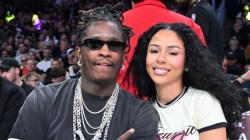



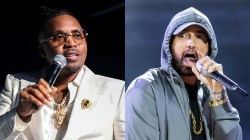
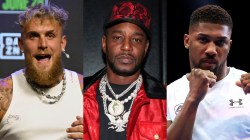

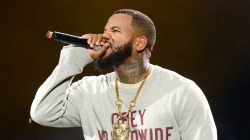
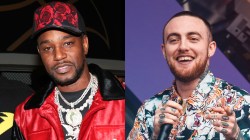
![Method Man Admits He Didn't Like Drake's "Wu-Tang Forever": "I [Wasn't] Getting On That"](https://hiphopdx.com/wp-content/uploads/2025/12/method-man-drake-wu-tang-forever-remix.jpg?w=250)
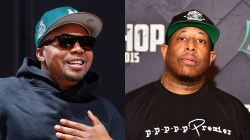
Great review, have seen it already and read the book. Having been an interested and avid follower of these cases from the start, read every book, seen every documentary and numerous YouTube videos of theories and interviews I can say, in my opinion, murder rap makes absolute sense, it’s straight forward and doesn’t offer far fetched theories. It benefits from a wealth of fact based evidence (well officially recorded statements) and complements the knowledge of anyone who has had a deeper interest.
Those who prefer to believe in the numerous other theories will find areas to pick holes and question the facts presented, as much to save face and protect their own investments/loyalties but the average joe public I think will find it all plausible.
It all boils down to the fact of: do you believe the confession of a career criminal gangbanger, can he be trusted?
Can you tell me where you saw the docu, i really want to see it but i cant find it?
Get it from kickasstorrents. I got it from there. Quick download.
It’s in Reelz; I DVR’d it
Well, I haven’t always followed the whole investigation stories and theories, until I recently watch “biggy
There are major major flaws in greg kadings work one being unlike russel poole he is a bent cop that lied in a federal trial hes also a gang cop with direct ties to the suspect ,reggie wright whos dad heads las gang division , he also uses the suspect in his documentary , he also uses cathy scott who he admits forged tupacs coroners report ,a known lier …also he obtained this confession after setting up keffe d and saying if he admits to murder the drug shit will go away and he avoids jail..but whats the sentence for murder and if he confessed why no trial and conviction , cause the truth is the confession was got under duress and in admissible and also doesnt fit the real evidence ,not only that greg deliberatly missed out key points in the interview , any lawyer that reads it will tear it apart , basically greg claims he knows the confession true (even know keefe d is known for lyin to lesser his sentences)because keffe d says things hed only know if he was there but if u read the full manuscript greg leads every question feeding keefe the answers within the question,gregs a very smart bent cop ..keffe ” con fessed” cause he knew thered be no charges for anythin he walks free if he makes this confession …greg had him by the balls and u know what id do the same thing in keffee d position and so would you
Now we get to a crucial fact greg missed out and thats real evidence not contrived confesssions
Remember yaki kadafi , said he could identify the driver right ? Well rip russel poole ..his police interview has been leaked , and he doesnt describe a buck tooth crack head looking keefe d no no no , he describes ..
Light skinned black man
Small mustash
White cap
There’s a lot of contradictory and false information in this comment, so to clarify for anyone reading this: First, the film doesn’t say that the driver of the Cadillac when Pac was killed was Keffe – he was allegedly in the passenger seat. He claimed that someone named Terrence Brown was the driver, so whether someone’s description of the driver matches Keffe is irrelevant. Keffe’s statement to Kading’s task force was part of a proffer agreement, which meant that if he lied and they caught him, he would go to jail; unlike a jailhouse snitch situation where an informant has nothing to lose by lying. By comparison, Poole relied heavily on jailhouse informants, like Michael Robinson. As for Kading being a “bent cop,” he was investigated and cleared by internal affairs and then given his choice of what to do next in the department. The investigation was just used as an excuse to pull him off of the case.
I always thaught that reggie wright told orlando and his friends where tupac and suge where and that he was the mastermind behind the shootings. His dad was also present that night in the mgm grand.
I wanna ask both of you if you watch the docu and if so where i can watch the docu?
Fibe show me terrence brown
Sorry ,
Yaki kadafi describes a
Light skinned black man
Small mustash
WHITE CAP
Looked like a bitch (a wimp )
Notice no big headed ugly lookin guy with a buck tooth
Then we visit you tube and type this in
‘Harry billups’ we scroll to the interview ,we click and we see
Light skinned black man
Small mustash
WHITE CAP
Looking like a bitch
Case closed
Khadafi was talking about the dude who shot 2Pac, not Biggie..Khadafi was dead by the time BIG was killed
No kafafi was talkin about the driver ask brent becker not only that …kadafis witness statement has been posted online and describes harry billups end of story , u clearly havent seen it so dont comment and your time frames irilvant what do they mean exactly ? Zero i imply retard biggie n pac were killed by the same gang of cops
Keffe d was wearing a white hat & had a small mustash. Keefe had no Buck tooth back then. It wasn’t anyone other than the crips who killed PAC. Harry Billups was linked to biggies killing not pac’s which was completely disproved. Orlando, keffe were always known to be there. Murder rap solved this murder. Unfortunately both shooters are dead from unrelated beefs.
Get the very best and TOP GRADE MEDICAL WEED Cure (cancer, chronic pains, depression, anxiety etc etc) Marijuana oil, shatter and wax Available !! others include pain pills , purple drank….. call/ text me on (443)488-9185 Skype me at raoul.machintosh email at r.machintosh @ gmail . com
Loved the documentary & book! I was surprised to see that the two ladies that was so awestruck at seeing Tupac up close was the ones that would later be why Tupac was murdered that night.
Where did you see the docu? can you please give a link
do any of you guys have a link so that i can watch the documentary as well ?????
Down the torrent from kickasstorrents. I got it from there. It was damn good too.
Thanks for the article. Sounds like a much watch. I will say reading this article made me sad. Shocked puffy (or whatever the hell hes going by these days) was the driving force here (foxy brown bit was super interesting too). Do you get the impression that without the $1 million bounty from Combs the murder would not have happened? Or was the retaliation for beating up Anderson the main motivator. At any rate a ridiculous tragedy.
He was only a victim of being related to a earlier gang fight
Does greg kadings film show the driver wearing a white cap ?
Actually, yeah, it does.
Great review! Definitely going to see this film.
Mpez clearly has issues….. How can a police composite profile be built on the description of someone looking like a bitch?
Know yaki must have been emotional but it’s not an accurate description
The reviewer says “Those who fervently believe in other theories, who think Tupac and/or Biggie were murdered by the CIA, the LAPD, Suge Knight, or Death Row security chief Reggie Wright, Jr., are unlikely to be persuaded by this film, but that says more about how difficult it is to change decade old opinions than Murder Rap’s quality.” and then Mpez shows up to prove him right.
Sep71996
You are correct and so was the reviewer. Apologies to Mpez.
this theory makes the most sense… Not a good look for puffy
fuck puffy
Keffe D says they were driving up Harmon towards Las Vegas Blvd when they spotted Pac. Keffe D says this is when they made a u-turn and did the shooting! The problem is, the shooting took place on Flamingo / Koval, about a mile away from where Keffe D is says they did it!
Keffe doesn’t say they did the shooting at Harmon and Las Vegas Blvd. – just that that’s where he thought they first spotted Suge and Pac’s caravan. That’s less than 1/2 of a mile from where they turned off onto Flamingo. The film doesn’t state how long it took Keffe to catch up to them and to figure out which car they were in.
Why he is not lock up an s if he took a deal who is
what about eazy been injected of a deseese…?
just watched it–sounds like Biggie was the only real innocent one–may be the victim of a reporter printing that an informant had fingered Biggie– but got it wrong–the informant had said PUFFY and the reporter printed that BIGGIE had offered the million…it looks like Biggie wasn’t even in the loop…sad to see that piddle daddy is free and now walking around with 735 dollars (yup–that’s what he’s worth, now–google it), and not in jail–but i see how the LA police didn’t follow up–everyone is dead–suge’s in jail–all they have on puffy is a guy saying he had a phone conversation with Puffy–and meanwhile the guy who got beat down by tupac a short time before the killing is the guy who killed him, so… you do the math
and you can’t say Tupac was innocent (like biggie) because he made that record publicly threatening to kill (basically) everyone and their families, (at Bad By records). The killer’s Uncle claims Puffy took that seriously and thought he was offering a million dollars to save his own life–so i can see why he MIGHT have said “get rid of “those guys” for me” and they hit them both (Suge got it in the head) but the guy who died (Tupac) was the guy who beat up the killer–so i guess most of the bullets went towards him. And THAT’s what made it easy to drop–the guy who got beat down did the shooting.
Biggie wasn’t innocent in the same way 2Pac wasn’t innocent. Both did unwise things that led to their deaths. You do know Buggie instigated a drive-by shooting against Snoop and Tha Dogg Pound in New York, right? He also recorded diss songs after 2Pac died and then performed those lyrics on LA radio. Putting out “Who Shot Ya?” after Quad Studios showed poor judgment, whether it was recorded with 2Pac in mind or not.
Lol, diddy’s net worth is 700 million..
What, 735 million, not 735 dollars.. lol
Just watched this,well it makes more sense now..!
Its Going to be on REELZ CHANNEL 299 FOR DISH NETWORK
MONDAY NOVEMBER 23 AT 930 PM
Nobody gives a flying fluck.